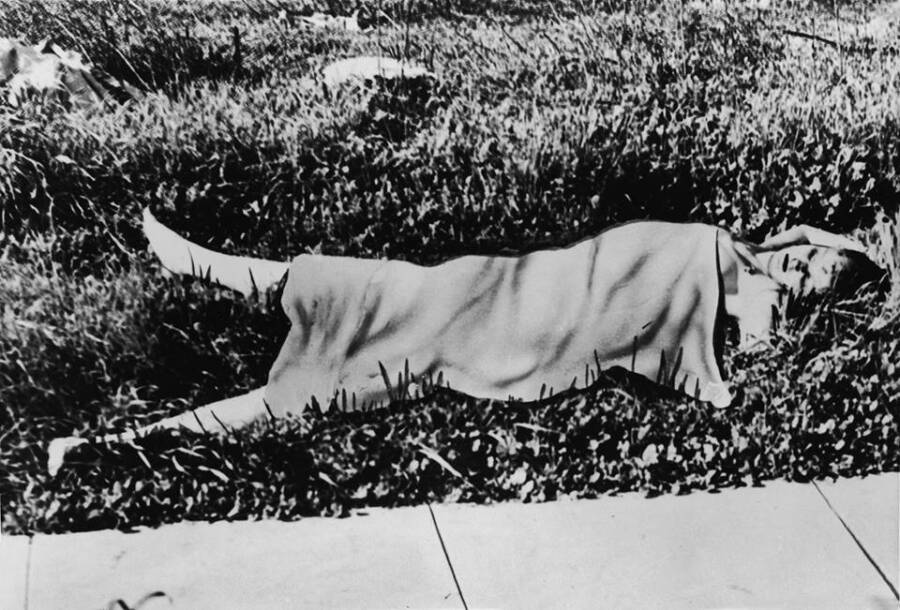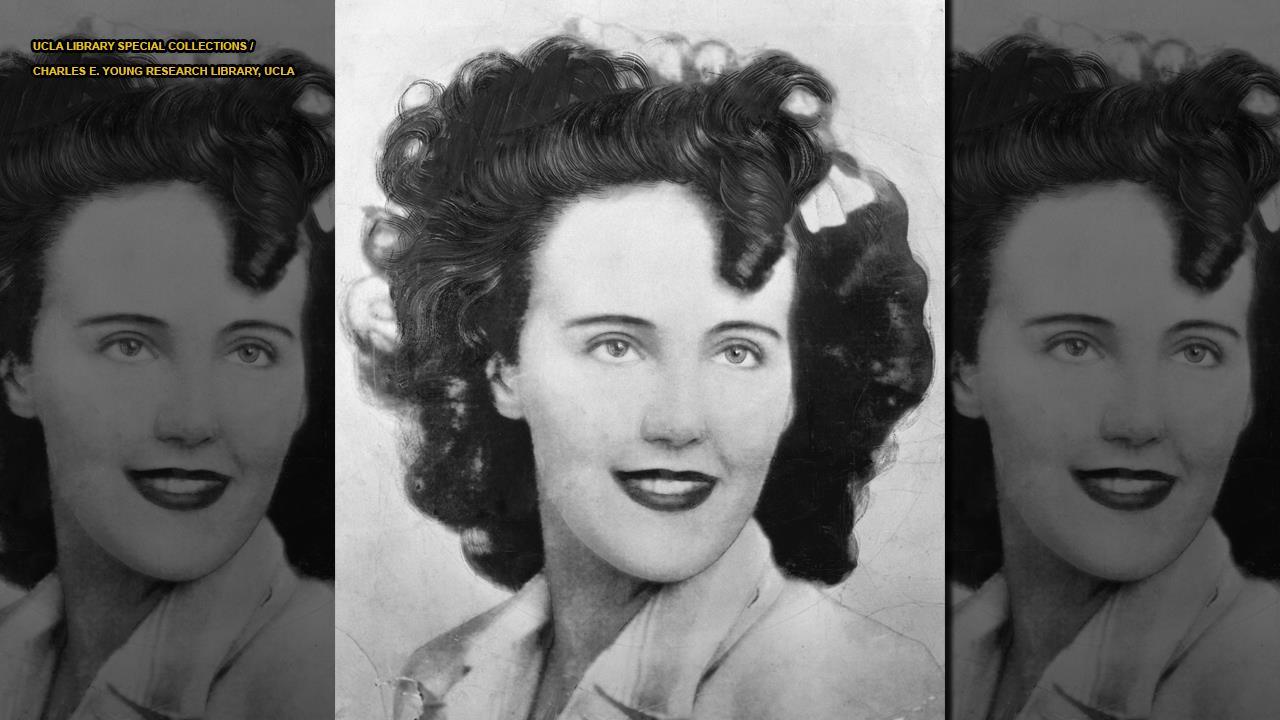Why, after nearly eight decades, does the name "Black Dahlia" still send shivers down the spines of those who hear it? The brutal slaying of Elizabeth Short, and the subsequent media frenzy surrounding the case, has cemented its place as one of the most infamous unsolved murders in American history, a chilling reminder of a case that has never been closed.
On a cold January morning in 1947, in the 3800 block of Norton Street, in the Leimert Park neighborhood of Los Angeles, a horrifying discovery was made. A woman, walking along the sidewalk, caught a glimpse of what she initially believed to be a discarded department store mannequin. However, upon closer inspection, the gruesome reality became apparent: it was the brutally mutilated body of a young woman, bisected at the waist and posed in a horrific manner. The top half of the body was separated from the lower half. This ghastly finding would soon become known as the "Black Dahlia" case, a moniker that would forever be associated with the victim, Elizabeth Short.
The details of the crime were shocking. Elizabeth Short's body had been drained of blood, her face slashed, and her body meticulously posed. The case captured the public's imagination, and the ensuing investigation became a media circus. Over the years, numerous books, films, and documentaries have attempted to unravel the mystery, but the identity of the killer has remained elusive.
- Spotlight On The Ageless John Stamos A Youthful Glow
- The Ultimate Guide To Sean Astins Weight Loss Journey
| Category | Details |
|---|---|
| Full Name | Elizabeth Short |
| Nickname | The Black Dahlia |
| Date of Birth | July 29, 1924 |
| Place of Birth | Boston, Massachusetts |
| Date of Death | January 15, 1947 |
| Place of Death | Leimert Park, Los Angeles, California |
| Physical Appearance | Dark hair, often styled in a signature wave; fair complexion |
| Aspirations | To become an actress |
| Known Associates | Numerous men, including potential romantic interests and acquaintances. |
| Notable Features | Her distinctive dark hair and often-photographed image. |
| Case Status | Unsolved |
| Reference | FBI - The Black Dahlia Murder |
The meticulous autopsy conducted on the morning of January 16, 1947, revealed the horrific details of Short's death. The autopsy, attended by only two coroners, Harry Hansen and Ray Pinker, and performed by Dr. Frederick Newbarr, the chief autopsy surgeon for Los Angeles County, with assistance from Dr. Victor Cefalu, determined the cause of death to be hemorrhage and shock due to deep knife lacerations. The report also highlighted the disturbing fact that the victim's body had been "posed," with her hands above her head and legs spread apart, adding another layer of depravity to the crime. The mutilation of her body, the precise nature of the incisions, and the deliberate arrangement of her corpse painted a picture of a killer who was both skilled and filled with a deep-seated rage.
The case quickly gained national attention, with newspapers and radio broadcasts detailing the gruesome discovery. The sheer brutality of the crime, coupled with the victim's captivating appearance and the mystery surrounding her life, fueled public fascination. Elizabeth Short, a young woman with a striking appearance, was quickly dubbed "The Black Dahlia" by the press, a name that would forever be linked to her tragic fate. The moniker was said to have originated from a drug store, a frequent hangout for the girl, where men used to call her Dahlia and she got a dark sense of humor, and wore dark clothing, and would often joke about her appearance.
The investigation that followed was one of the largest and most complex in Los Angeles Police Department history. Detectives pursued hundreds of leads, interviewed numerous suspects, and poured over mountains of evidence. Yet, despite their efforts, the killer was never apprehended. The lack of resolution only served to heighten the mystery and maintain the public's interest in the case. Fingerprints were taken from the crime scene and shared with the FBI, who then shared those details with the world. The case gained so much traction that the Los Angeles Examiner used their "soundphoto machine" a precursor to the modern fax machine to send enlargements of the prints to FBI headquarters in Washington, D.C., showcasing the urgency of solving the case.
- Exploring The Allure Of Sondra Blust An Insight Into Her Onlyfans Journey
- Uncover The Marriage Of Christie Sides
The Black Dahlia murder shared similarities with other high-profile, sensationalized crimes of the era. The "Red Lipstick Murder" of Jeanne French, the "Red Ribbon Murder" of Olive Laura Hill Gase, and the mysterious "Green Twig Murder" of Louise Springer also captivated the public, highlighting a darker side of post-war America. As John Gilmore noted in his 1994 book, Severed, the case of the Black Dahlia, the same year John Bauredorf's maid found her body, was one of the first instances of the era of the unsolved murder, and quickly became one of the most prominent cases of its kind.
The enduring fascination with the Black Dahlia murder stems from several factors. The brutal nature of the crime, the victim's captivating persona, and the unsolved nature of the case have all contributed to its lasting legacy. The cases sensationalist title and the way in which the body was discovered also helped to fuel public intrigue.
On October 12, 1944, a similar tragedy unfolded when Bauerdorf's maid and a janitor discovered her body face down in her West Hollywood apartment bathtub. The cause of death was determined to be hemorrhaging from the facial lacerations and blows to the head. Newbarr also noted that the victims body had been posed with her hands above her head and legs spread apart.
Elizabeth Short, an aspiring actress, was found murdered on January 15, 1947, in Leimert Park, Los Angeles, California. The autopsy was conducted on January 16, 1947, and was limited to the two coroners, Harry Hansen and Ray Pinker. The autopsy was conducted by Dr. Frederick Newbarr, chief autopsy surgeon for the county of Los Angeles, with Dr. Victor Cefalu assisting, and the cause of death was determined to be hemorrhage and shock due to deep knife lacerations.
The case has inspired numerous fictional accounts, including John Gregory Dunne's "True Confessions" (1977) and James Ellroy's "The Black Dahlia" (1987), perpetuating the mystery and keeping the story alive. In the Los Angeles Examiner, detectives shared fingerprints from the victim, and reporters sent enlargements of the prints to FBI headquarters in Washington, D.C., to aid in their investigation.
The mystery surrounding the Black Dahlia murder has been fueled by many things, including a lack of closure, speculation, and the constant search for answers. The case continues to be a reminder of the dark side of human nature and the lingering impact of unresolved tragedies. Over the years, new evidence has been found, but many still believe that it is a murder that will never be solved. It was a murder on one day, and it's still shocking: The abuse unleashed on the victim's corpse; Elizabeth Shorts murder became known as the Black Dahlia. The LAPD served a search warrant on the University of Southern California medical school.
According to numerous sources, Elizabeth Short was an aspiring actress when she was found murdered on January 15, 1947. The killing, which was later dubbed the Black Dahlia, has remained unsolved, and many believe it will never be solved. The gruesomeness and spectacle of the crime are believed to be factors in its enduring fame.
The case highlights a period of significant social and cultural change in America. The post-war era brought with it both a sense of optimism and a darker undercurrent of crime and violence. The Black Dahlia murder became a symbol of this duality, a stark reminder of the fragility of life and the hidden dangers lurking beneath the surface of a rapidly changing society. As the case continues to captivate and haunt, it will serve as an unsettling reminder of the lasting effects of the unsolved case.



Detail Author:
- Name : Oral Durgan
- Username : angelo.swaniawski
- Email : ernser.ressie@gmail.com
- Birthdate : 1999-05-05
- Address : 7721 Maurice Hills Kiehnmouth, OR 47770
- Phone : +1-380-693-6950
- Company : Jones LLC
- Job : House Cleaner
- Bio : At rerum nobis qui quia at. Placeat voluptatibus in ut recusandae iste non nam.
Socials
twitter:
- url : https://twitter.com/lacy_wisozk
- username : lacy_wisozk
- bio : Deleniti omnis quis qui. Nam sunt ab sed voluptatem amet in voluptas. Qui exercitationem perspiciatis eius delectus aut ipsum.
- followers : 2058
- following : 1263
instagram:
- url : https://instagram.com/lacy_wisozk
- username : lacy_wisozk
- bio : Eius quam beatae praesentium nobis amet animi. Qui velit quibusdam architecto.
- followers : 1431
- following : 2050
tiktok:
- url : https://tiktok.com/@wisozkl
- username : wisozkl
- bio : Eos repellendus suscipit fuga tempora. Animi qui qui sed earum.
- followers : 6329
- following : 535
facebook:
- url : https://facebook.com/lacy_wisozk
- username : lacy_wisozk
- bio : Sapiente omnis ut sint quis ipsam aut doloremque. Et quia rem ipsam amet nisi.
- followers : 4484
- following : 2739